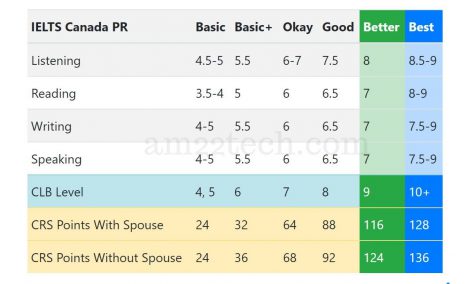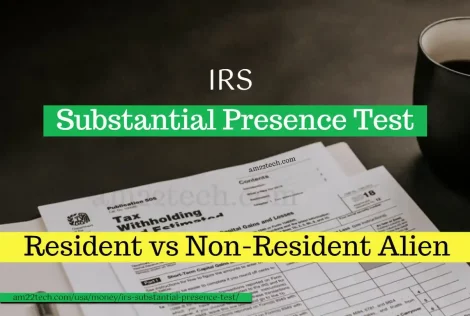The USCIS is publishing new rules for H1B trying to make changes to make it modern.
We analyze how the modernization of these rules will affect the existing H1B workers as well as new kids graduating and filing H1B applications.
These new H1B rules will be activated on 17 Jan 2025.
This article will discuss:
Effects on H1B Workers
Education degree – directly related to H1B Job
New rules require that H1B workers must provide evidence of “specialty occupation” qualifications tied directly to their degree.
Earlier, it was not mandatory but now, they are making it required.
The employer can mention various education degrees that are eligible or in sync with job requirements but all those degrees should be directly related to the job function.
Example 1
Job Title: Data Analyst
Required Degree: Bachelor’s degree in Data Science, Statistics, Computer Science, or a closely related field.
AI Passport & Visa Photos in Minutes!
No studio, no waiting. Get perfectly compliant photos from your phone.
✨ Get My Photo Now See how our AI transforms your phone photo into an embassy-ready passport picture!
See how our AI transforms your phone photo into an embassy-ready passport picture!- The job requires specialized knowledge in data modeling, statistical analysis, and programming, which are specifically taught in these degree programs.
- The coursework in these fields (e.g., data visualization, SQL, Python, and statistical inference) provides practical and theoretical knowledge directly applicable to the role’s duties.
If the applicant holds a degree in an unrelated field, such as Business Administration, they may need to demonstrate additional credentials (certifications or equivalent experience) to meet the directly related criteria.
Impact
This could make it harder for those with degrees in general fields (like Business Administration) to qualify, causing delays or denials.
Example 2
Mechanical Engineering Degree and H1B for Software Engineer Role
Scenario
- H1B Worker: Holds a Bachelor’s Degree in Mechanical Engineering.
- Job Title: Software Engineer at Infosys.
- Challenge: Under the new rule, the H1B applicant must show that the degree (Mechanical Engineering) is directly related to the job duties of a Software Engineer.
How to Demonstrate Qualification
To meet the new specialty occupation requirements, the worker must provide evidence that the knowledge and skills from their Mechanical Engineering degree directly relate to the duties of the Software Engineer role.
- Coursework Relevance:
The worker can highlight specific coursework or academic projects that are directly applicable to software development. For example:- Courses in Computer Programming, CAD Software Development, or Control Systems.
- Final year projects or thesis involving software tools like MATLAB, Python, or custom applications for mechanical systems.
- Professional Experience Alignment:
The worker can show professional experience in software development through:- Internships, projects, or full-time roles during/after their degree that required programming skills (e.g., developing automation scripts or engineering tools).
- Use of programming languages, frameworks, or databases relevant to the current software engineer role.
- Job-Specific Justifications:
Infosys can argue that their Software Engineer role involves solving problems requiring analytical and computational skills, which are part of a Mechanical Engineering background. For instance:- Simulation software development.
- Writing algorithms for predictive maintenance in manufacturing systems.
- Supplementary Certifications:
Additional certifications in software technologies (e.g., Java, AWS, or Full-Stack Development) can strengthen the case that the worker possesses the required specialized knowledge.
Outcome
By connecting specialized skills in software development to coursework and professional experience, the applicant can demonstrate that their degree in Mechanical Engineering logically supports the requirements of the Software Engineer position. This aligns with the new H1B rule’s “directly related” criteria.
H1B Amendment – Change in Work Location
Old Rule
Employers were required to file an H1B amendment whenever there was a material change in the terms and conditions of employment, including a change in work location.
New Rule
The rules even though were the same earlier, are now clearly defined.
Earlier the same rules were vague and not consistent. Attorneys used to take a final call.
- An amendment is required if the new location is outside the geographical area covered by the original Labor Condition Application (LCA).
- No amendment is required if the change is within the same metropolitan statistical area (MSA) covered by the original LCA.
Is H1B Amendment required (App)
No H1B itinerary required
H1B workers and employers are not required to send an H1B work itinerary now with H1B amendments, extensions or transfers.
Impact
You can skip sending the work itinerary with your H1B application.
Maintenance of status proof mandatory
For Extensions, transfers, Amendments, and changes of status, send the proof of maintenance of status with the H1B application.
Impact
Most attorneys do send the last 3 pay stubs currently to avoid RFEs but this is now a mandatory requirement.
Automatic F-1 to H-1B extension
The new F-1 to H-1B rule introduces an automatic extension of F-1 status and employment authorization until April 1 of the fiscal year when the H-1B petition is filed.
Old Rule: Cap-Gap Extension
Previously, the “cap-gap” rule automatically extended an F-1 student’s status and work authorization from the OPT expiration date until October 1, the start of the fiscal year for approved H-1B petitions.
However, this extension only applied to students whose H-1B petitions were approved or pending by the time their F-1 status expired.
New Rule: Extension Until April 1
The updated rule provides additional flexibility:
- Automatic Extension: F-1 status and employment authorization are automatically extended until April 1 if:
- The student’s F-1 status or OPT expires before April 1.
- A timely-filed H-1B petition with a change-of-status request is pending adjudication for the next fiscal year.
- Why April 1?
- April 1 is when USCIS begins accepting H-1B cap-subject petitions for the new fiscal year (starting October 1).
- This avoids gaps in employment authorization for F-1 students whose status or work authorization might otherwise expire before their employer can submit the H-1B petition.
Example Scenario
- Student’s OPT Expiration: March 15.
- Employer’s H-1B Petition Filing: April 1.
- Issue: Without this rule, the student would have to stop working on March 15, as their status and work authorization expire.
- Solution: The new rule extends the student’s F-1 status and OPT authorization until April 1, allowing continuous lawful work until the H-1B petition is filed.
Benefits of the Rule
- Avoids Employment Gaps: F-1 students can continue working without interruptions until H-1B petitions are processed.
- Increased Stability: Employers no longer face workforce disruptions caused by the expiration of F-1 status before April.
- Streamlined Transition: Simplifies the bridge from F-1 status to H-1B without creating a “gray period” of uncertainty.
H1B person ownership in the company – reduced 18 months approval
H1B validity for business owner applicants is capped at 18 months initially and for the first extension.
It may be a full 36-month extension starting the second H1B extension.
Impact
More frequent renewals create additional uncertainty for H1B entrepreneurs.
Site visits to be made legally bounding
H1B site visit to verify the physical presence and work in the field will be legally bounding.
Currently, you or your employer can deny providing details on USCIS site visits as per law.
Impact
H1B may be revoked if you don’t comply with site visits now.
Effects on IT Consulting Companies
#1 H1B Job Requirement
IT consulting companies must now provide more robust proof of job offers and contracts.
Impact
Increased documentation requirements could make it harder for smaller firms to sponsor H1B visas, possibly leading to higher administrative costs.
#2 Client site placement
When placing H1B workers at client sites, the employer must demonstrate that the position is in a specialty occupation per the third-party client’s requirements.
Example
For judging the ‘specialty occupation’ criteria, USCIS will use the client’s job role and duties and not the IT consulting company’s job role.
Impact
This may reduce flexibility and increase scrutiny, leading to fewer approvals for consulting companies heavily reliant on third-party placements.
#3 Employer-Employee Relationship
Employers must control the H1B worker, even in third-party placements.
Impact
Could discourage “body-shopping” practices, where IT consulting companies place workers with minimal oversight.
This is going to add more challenges for consulting companies and some H1B workers, particularly those in less specialized roles or those reliant on third-party client site placements.
However, students and high-skilled workers directly employed by reputable companies stand to benefit from the added clarity and streamlined processes.
FAQ
If you are on vacation and employer records show you on PTO (or other holiday type), then, no issues.
The final date of new H1B rules activation is not known yet. The final date will be 30 days after the rules are published in the Federal register.
We will update this page when this date is known.
The rules are being made strict.
A lot will depend on what employer writes in the Job description.
I have given an example of mechanical engineering and how the job description should like to avoid the issues above.
The deference of old approvals may be given to new H1B extensions as per USCIS officer’s discretion.
But, for H1B transfers, it may become a very negative point if your education is not directly related to the H1B job position.
Your employer and attorney will have to write creative job descriptions to make it happen.
It will depend on the job description published by the employer.
Example 1:
If the job AD requires that you have a master’s degree in information technology, then your master’s degree should be directly related to the H1B job.
Example 2:
If the H1B job AD explicitly mentions that any degree in computer science or information technology at either a Bachelor’s level or a master’s level is acceptable for the job, then anyone can be used for the H1B application.
If you work remotely from home on an H1B visa, your H1B LCA should explicitly mention your home address as one of the ‘work locations’.
H1B can legally work from home by filing an amendment.
To work from outside the USA, you have to understand the concept of status in the USA. I have explained how can H1B work from India or Canada (on PR) and what things to keep in mind.
These rules have no relation with Trump’s administration.
These have been devised by Biden’s administration and they are trying to push them as fast as possible.
Once they are published in the Federal Register, it will be a little difficult to revert them by the Trump administration.
Trump admin may add another type of hurdle though as we saw in the last presidential term. They hand-twisted and added a lot of speed breakers in the H1B and H4 EAD processes,
As long as the H1B employer keeps you on the payroll and allows you the extended sick leave as per the general company rules (which are also applicable for other employees), you should be fine.
These rules should be documented clearly and should be shared with USCIS if requested.
Source: DHS publication




